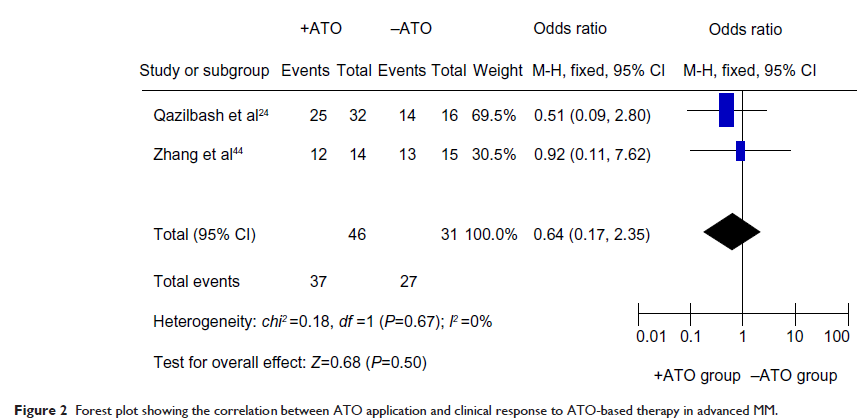108899
论文已发表
注册即可获取德孚的最新动态
IF 收录期刊
- 3.4 Breast Cancer (Dove Med Press)
- 3.2 Clin Epidemiol
- 2.6 Cancer Manag Res
- 2.9 Infect Drug Resist
- 3.7 Clin Interv Aging
- 5.1 Drug Des Dev Ther
- 3.1 Int J Chronic Obstr
- 6.6 Int J Nanomed
- 2.6 Int J Women's Health
- 2.9 Neuropsych Dis Treat
- 2.8 OncoTargets Ther
- 2.0 Patient Prefer Adher
- 2.2 Ther Clin Risk Manag
- 2.5 J Pain Res
- 3.0 Diabet Metab Synd Ob
- 3.2 Psychol Res Behav Ma
- 3.4 Nat Sci Sleep
- 1.8 Pharmgenomics Pers Med
- 2.0 Risk Manag Healthc Policy
- 4.1 J Inflamm Res
- 2.0 Int J Gen Med
- 3.4 J Hepatocell Carcinoma
- 3.0 J Asthma Allergy
- 2.2 Clin Cosmet Investig Dermatol
- 2.4 J Multidiscip Healthc

已发表论文
对复发 / 难治性多发性骨髓瘤患者采用三氧化二砷为基础的治疗:一项荟萃分析与系统化评价
Authors He XP, Yang K, Chen P, Liu B, Zhang Y, Wang F, Guo Z, Liu XD, Lou JX, Chen HR
Published Date September 2014 Volume 2014:7 Pages 1593—1599
DOI http://dx.doi.org/10.2147/OTT.S67165
Received 3 May 2014, Accepted 24 June 2014, Published 10 September 2014
Abstract: Multiple myeloma (MM) is a clonal malignancy characterized by the proliferation of malignant plasma cells in the bone marrow and the production of monoclonal immunoglobulin. Although some newly approved drugs (thalidomide, lenalidomide, and bortezomib) demonstrate significant benefit for MM patients with improved survival, all MM patients still relapse. Arsenic trioxide (ATO) is the most active single agent in acute promyelocytic leukemia, the antitumor activity of which is partly dependent on the production of reactive oxygen species. Due to its multifaceted effects observed on MM cell lines and primary myeloma cells, Phase I/II trials have been conducted in heavily pretreated patients with relapsed or refractory MM. Therapy regimens varied dramatically as to the dosage of ATO and monotherapy versus combination therapy with other agents available for the treatment of MM. Although ATO-based combination treatment was well tolerated by most patients, most trials found that ATO has limited effects on MM patients. However, since small numbers of patients were randomized to different treatment arms, trials have not been statistically powered to determine the differences in progression-free survival and overall survival among the experimental arms. Therefore, large Phase III studies of ATO-based randomized controlled trials will be needed to establish whether ATO has any potential beneficial effects in the clinical setting.
Keywords: multiple myeloma, arsenic trioxide, clinical trial, therapy, meta-analysis
Keywords: multiple myeloma, arsenic trioxide, clinical trial, therapy, meta-analysis
